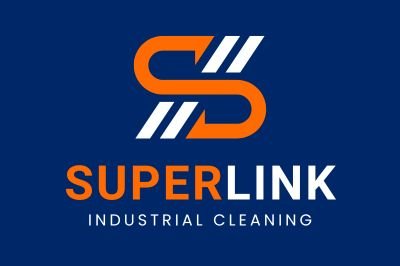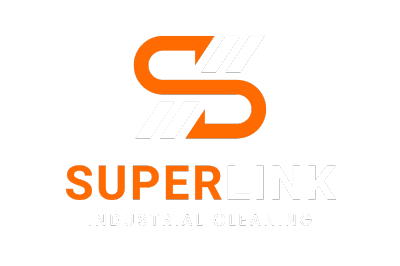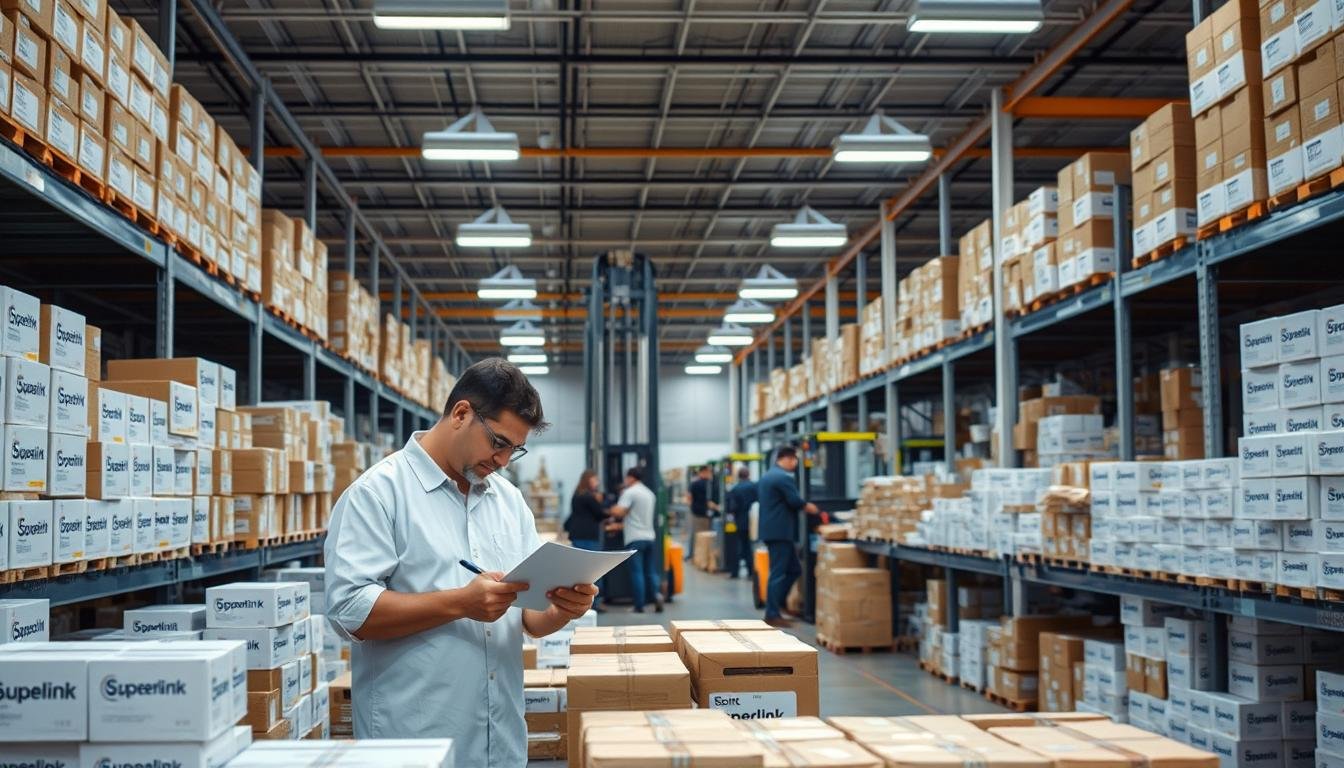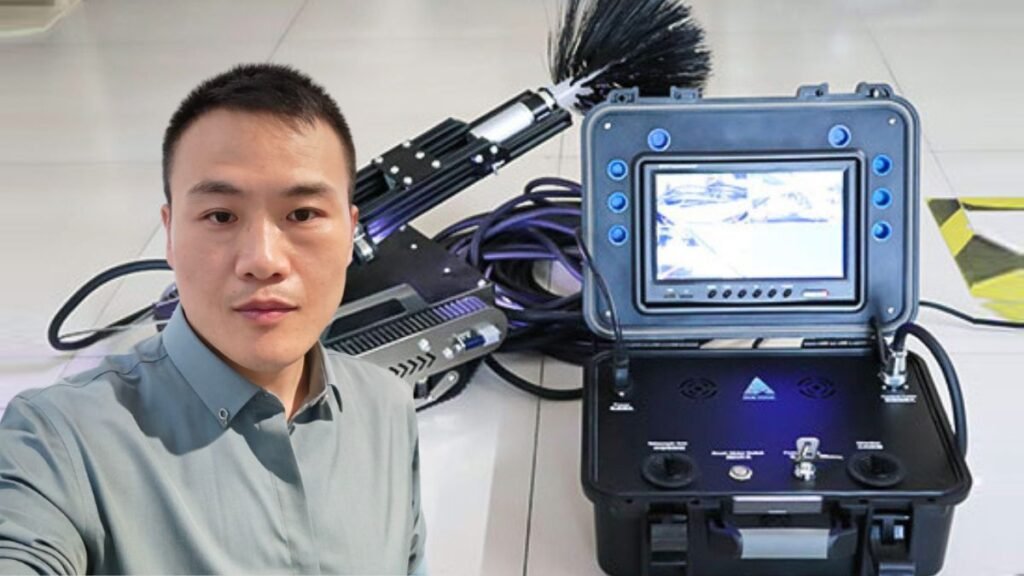Ever thought about what’s hiding in your home’s air system? Let’s explore the world of ventilation duct cleaning equipment together! I’m excited to show you the tools that keep our air clean and our homes healthy.
Choosing the right Ventilation Duct Cleaning Equipment is key for clean indoor air. The right tools can remove up to 99% of harmful stuff like dust, mold, and allergens from your air ducts1. This makes quality HVAC Cleaning Tools essential for everyone.
In this guide, we’ll look at duct cleaning tools in detail. From powerful vacuums to inspection cameras that check up to 100 feet of ductwork at once. We’ll see how modern tools can cut cleaning time by up to 30% in hard-to-reach spots1. I’ll also share tips on picking equipment that lasts up to 10 years, making it a great investment.
So, get ready for an adventure that will change how you think about clean air. Let’s make breathing easier and living healthier!
Key Takeaways
- Proper duct cleaning equipment removes up to 99% of harmful contaminants
- Quality tools can increase cleaning efficiency by 30%
- High-grade equipment can last up to 10 years
- Regular cleaning can improve system efficiency by 20%
- The U.S. duct cleaning market is valued at around $5 billion
Introduction to Ventilation Duct Cleaning
Clean ducts are key for healthy air inside your home. They help air move around. Let’s explore why cleaning them is important and how the right tools help.
Importance of Clean Ducts
Air ducts spread pollutants around your home 5 to 7 times a day. This can make asthma worse and increase respiratory risks. Professional cleaning can make your air up to 50% cleaner, which is great for homes with pets. It’s not just about feeling good – it’s about staying healthy.

Benefits of Regular Maintenance
Regular duct cleaning is more than a task. It’s a smart choice for your home and health. Clean ducts can make your HVAC system 20% to 30% more efficient, saving you money. They also last 5 to 10 years longer. That means saving money and breathing cleaner air!
Overview of Duct Cleaning Equipment
Duct cleaning tools vary. Air Duct Vacuum Systems can remove 15 to 20 pounds of debris from a typical home. Truck-mounted systems have 10 to 20 times more suction than portable ones. HEPA filters catch 99.9% of dust, ensuring a deep clean.
From strong vacuums to tools that agitate, today’s equipment makes cleaning ducts easy and effective. It’s not just about dust removal. It’s about making your home a healthier place. With the right tools, you’re not just cleaning ducts; you’re giving your home a fresh start!
Understanding Ventilation Ducts
Let’s dive into the world of ventilation ducts – the heroes of our homes and buildings! They keep our air fresh and flowing. But, they need regular care to work their best.
What Are Ventilation Ducts?
Ventilation ducts are the air paths in your home or building. They’re like the lungs of your HVAC system. They work hard to keep air quality and comfort good. Metal ductwork can last decades, while flexible ducts have a shorter life.

Types of Ventilation Duct Systems
There are many duct systems, each with its own features:
- Metal ducts: Durable and good for both contact and negative air cleaning methods
- Flex ducts: Need gentle handling because they’re flexible
- Duct board: Requires special care because of its insulation
Common Issues with Duct Systems
Ducts face many challenges over time. Old systems can get air leaks, raising utility bills and lowering HVAC efficiency. Dirty ducts can spread dust, allergens, and contaminants, harming indoor air quality. Rodents can damage ducts, causing air leaks and health risks.
To solve these problems, tools like Duct Cleaning Brushes and Duct Cleaning Robots are essential. These tools, with strong suction and adjustable brushes, can clean hard-to-reach areas. They improve air quality and system efficiency.
“Regular duct maintenance is key to a healthy home and efficient HVAC system.”
Remember, cleaning ducts right needs protective gear and careful handling. It’s usually best to let professionals do it. They have the right tools and know-how for safe and effective cleaning.
Key Features of Duct Cleaning Equipment
Choosing the right tools for duct cleaning is key for Commercial Duct Cleaners and Industrial Duct Cleaning Solutions. Let’s explore what makes duct cleaning equipment special.
Power and Efficiency
The heart of duct cleaning systems is their vacuum power. Truck-mounted vacuums are top for big jobs. They have better suction and can hold more debris than portable units. These machines can clean up to 50% better than other methods.
Versatility and Compatibility
Great duct cleaning equipment comes with tools for different duct types. Rotary brushes clean up to 60% better for tough debris. Air whips remove light particles up to 50% better. For sensitive systems, softer tools avoid damage to fiberglass-lined ducts.
Size and Portability
Truck-mounted systems are powerful, but portable vacuums are flexible for city areas or buildings with limited access. About 30% of HVAC systems need special equipment because of their unique designs8. This flexibility is vital for Commercial Duct Cleaners in different settings.
| Equipment Type | Power | Portability | Best For |
|---|---|---|---|
| Truck-Mounted Vacuum | High | Low | Large Commercial Jobs |
| Portable Vacuum | Moderate | High | Residential/Small Commercial |
| Rotary Brushes | N/A | High | Stubborn Debris Removal |
| Air Whips | N/A | High | Light Particle Removal |
Using the right equipment can improve indoor air quality by 30% after cleaning. Investing in quality tools and training is essential for any serious duct cleaning job.
Types of Duct Cleaning Equipment
Let’s explore the world of duct cleaning tools! Whether you’re cleaning your home’s ducts or big commercial jobs, there’s a perfect tool for you. We’ll look at Residential Duct Cleaning Tools and Rotary Duct Cleaning Systems that feel like operating a spaceship.
Vacuum Systems
Vacuum systems are the heart of duct cleaning. Truck-mounted vacuums have more power and can hold more debris than portable ones. They’re great for big HVAC systems. These systems clean ducts and vents well, leaving no dust or dirt behind.
Brushes and Agitation Tools
Rotary brushes are top picks for professionals. They spin fast to clean off tough debris and mold spores. These tools are key for deep cleaning, where grime builds up.
Air Whips and Blow Guns
Air whips have long, flexible rods with brushes and nozzles. They’re perfect for getting into tight spots, like square ducts. Blow guns use high-pressure air to safely remove dust particles in commercial duct cleaning.
Rotary Duct Cleaning Systems use these tools together for a complete clean. They come with special attachments for better cleaning. Using these tools regularly can improve air quality and save energy in buildings.
The National Air Duct Cleaners Association (NADCA) says to clean air ducts every 3 to 5 years. Doing so can save on energy costs and keep your space comfortable.
The Role of HEPA Filters
HEPA filters are key in Ventilation Duct Cleaning Equipment. They are at the heart of many HVAC Cleaning Tools. They make sure the air we breathe is clean and healthy.
What is HEPA Filtration?
HEPA stands for High-Efficiency Particulate Air. These filters catch tiny particles, making them vital in duct cleaning systems. They can trap 99.97% of particles as small as 0.3 microns, beating MERV 16 filters in efficiency.
Advantages of HEPA Filters
HEPA filters in HVAC Cleaning Tools have many benefits. They greatly improve indoor air quality, which is key for asthma management. Studies show that air filtration is part of 27.4% of asthma care strategies. It leads to a notable drop in asthma symptom days.
Choosing HEPA Filtered Equipment
When picking Ventilation Duct Cleaning Equipment with HEPA filters, keep these points in mind:
- Filter efficiency (aim for MERV 13 or higher)
- Proper sealing to ensure air passes through the filter
- Overall system effectiveness, which depends on filter efficiency, airflow rate, and particle size
Investing in quality HVAC Cleaning Tools with HEPA filtration greatly improves indoor air quality. It’s very important in the 75% of US housing units with ducted forced air heat and 63% with central air conditioning.
| Filter Type | Efficiency | Particle Size Captured |
|---|---|---|
| HEPA | 99.97% | As small as 0.3 microns |
| MERV 13 | ≥85% | 1-3 um particles |
| Two MERV 11 in series | ~88% | Varies |
Safety Considerations
When it comes to duct cleaning, safety is key. Let’s explore the main safety tips for using Air Duct Vacuum Systems and Duct Cleaning Machines.
Personal Protective Equipment (PPE)
Wearing the right PPE is essential for duct cleaners. It can cut down exposure to harmful particles by up to 90%. You’ll need:
- Respirators (N95 masks or better)
- Safety goggles
- Cut-proof gloves (grade 5 or higher)
- Knee pads
It’s important to check and replace PPE often. About 30% of construction injuries are due to bad PPE.
Safe Operating Procedures
Using Duct Cleaning Machines safely is critical. Properly handling and disposing of debris can lower cross-contamination risks by 75%. Here are some important steps:
- Ensure good ventilation during cleaning
- Use strong vacuum cleaners with HEPA filters
- Provide safety training
- Follow ergonomic guidelines for lifting
Having safety training can cut accident rates by up to 40% in dangerous work places.
Common Hazards in Duct Cleaning
Duct cleaners face many dangers, like asbestos and mold. Regular professional checks are key to spotting risks. Some common dangers include:
- Respiratory problems from dust and mold spores
- Muscle injuries from lifting heavy tools
- Cuts and bruises from tight spaces
- Electrical dangers
Being exposed to mold spores can cause breathing problems for workers. It’s vital to know these risks and take the right precautions with Air Duct Vacuum Systems.
Remember, safety is not just about you. It’s also about keeping clients safe and building a good reputation. 90% of successful duct cleaning services say their good name and client trust come from following safety rules.
Maintenance for Duct Cleaning Equipment
It’s vital to keep your duct cleaning equipment in top shape. This ensures effective and efficient cleaning. Let’s explore some key maintenance tips to keep your gear in excellent condition!
Routine Checks
Regular inspections are essential to extend the life of your duct cleaning tools. Look for wear and tear on your Duct Cleaning Brushes. Also, check Duct Cleaning Robots for loose parts or electrical problems. It’s important to follow the manufacturer’s schedule for changing HVAC filters and cleaning coils to keep things running smoothly.
Cleaning and Storage Tips
After each use, clean your equipment well. For Duct Cleaning Brushes, remove debris and sanitize them. Store your tools in a dry, dust-free area to avoid corrosion and contamination. Remember, proper storage of pneumatic devices like air whips and blowguns is critical, as they need a lot of air pressure to work.
Repair and Replacement Guidelines
Know when it’s time to repair or replace your equipment. If your vacuum’s suction power drops, it might need service. Both truck-mounted and portable vacuums can clean HVAC systems well when maintained properly. For Duct Cleaning Robots, regular software updates and battery checks are key. Replace HEPA filters in your vacuum cleaners as recommended to keep contaminants contained during cleaning.
By following these maintenance guidelines, you’ll ensure your duct cleaning equipment stays in top shape. This guarantees excellent cleaning results every time!
Buying Considerations for Duct Cleaning Equipment
Choosing the right duct cleaning equipment is key for effective cleaning and air quality. Let’s look at important factors when buying Commercial Duct Cleaners and Industrial Duct Cleaning Solutions.
Budgeting for Equipment
When planning your budget for duct cleaning equipment, think about the size of your projects. Truck-mounted tools cost between $20,000 and $40,000. Portable vacuum units are cheaper, ranging from $3,000 to $10,000. Your choice should match the size and access of your projects.
Professional vs. DIY Choices
Professional equipment cleans better. Truck-mounted systems can make up to 10,000 CFM of airflow. Portable units average 2500-5000 CFM. This means professional tools are better for big jobs.
For smaller jobs or hard-to-reach areas, portable units are best. They’re used by 40% of professionals. These units are great for high-rise buildings or areas you can’t easily get to.
Warranty and Support Services
When buying Commercial Duct Cleaners, think about warranty and support. Regular maintenance can make your equipment last longer and work better. Look for manufacturers with good warranties and customer support.
Using the right cleaning tools and keeping them in good shape can cut indoor air pollutants by up to 60%. Professional duct cleaning equipment often comes with training and support. This ensures you get the most from your investment.
| Equipment Type | Cost Range | Airflow Capacity | Best For |
|---|---|---|---|
| Truck-mounted Systems | $20,000 – $40,000 | Up to 10,000 CFM | Large commercial projects |
| Portable Vacuum Units | $3,000 – $10,000 | 2500-5000 CFM | High-rise buildings, restricted access |
| Hand Vacuums | Varies | N/A | Detailed cleaning tasks |
Top Brands in Duct Cleaning Equipment
Let’s explore the world of duct cleaning equipment! The market is growing fast, with more businesses adding air duct cleaning to their services. This field is very profitable, with net profit margins of 50 to 70 percent.
Overview of Leading Manufacturers
NIKRO Industries, Inc. is a leader with a wide range of Residential Duct Cleaning Tools. They offer gas-powered and portable HEPA Filtration electric vacuum systems. Abatement Technologies® is also a key player, known for their HEPA-AIRE 2500 portable power vacuum.
What Sets Them Apart?
Hypervac Technologies has over 40 years of experience. Their lineup includes the Revolution Hybrid Vacuum and Cobraview Camera System. ProAir™ Industries is the top choice for HVAC contractors and carpet cleaners in the U.S. and Canada.
Brand Comparisons
Truck-mounted systems can cost up to $75,000. But ProAir™ has developed more affordable solutions based on customer feedback. These Rotary Duct Cleaning Systems are efficient for various projects. The National Air Duct Cleaners Association (NADCA) sets industry standards, making it easier to compare brands.
| Brand | Specialty | Notable Product |
|---|---|---|
| NIKRO Industries | HEPA Filtration Systems | Gas-powered Vacuums |
| Abatement Technologies | Portable Power Vacuums | HEPA-AIRE 2500 |
| Hypervac Technologies | Innovative Equipment | Revolution Hybrid Vacuum |
| ProAir™ Industries | Cost-effective Solutions | Custom Duct Cleaning Systems |
Environmental Impact of Duct Cleaning
Duct cleaning does more than just improve your home’s air. It’s also great for the environment! Using the right Ventilation Duct Cleaning Equipment can really help.
Energy Efficiency Benefits
Clean ducts are a big win for your HVAC system. They can make it up to 30% more efficient. This means your system uses less energy, which is better for the planet.
Impact on Indoor Air Quality
Did you know indoor air can be really polluted? It’s up to five times worse than outside air! Cleaning your ducts regularly can cut down indoor pollutants by 60%. This is a big help for the 1 in 5 Americans with allergies.
Eco-Friendly Cleaning Solutions
Choosing green cleaning is smart. Eco-friendly products are safer for you and the planet. They work well to remove dust and allergens. Plus, they’re biodegradable, which is good for the environment.
“Clean ducts, clean planet. It’s that simple!”
Regular maintenance every 3-5 years keeps your air clean. By picking the right tools and methods, we’re not just cleaning ducts. We’re also making our planet a cleaner place.
Cost
Hey hey, fellow explorers! Let’s talk about the cost of duct cleaning equipment. I’ve got some surprising figures to share. The DuctMaster 3, a top machine, costs $5,195. But, the TruckMaster 2 and Vent Vac 3 are more affordable at $2,595 and $2,645 respectively.
If you’re looking for something in between, check out the TurboMax series. Prices range from $3,445 for the TurboMax 1 to $4,845 for the TurboMax 3. And don’t forget about extras! An Apollo Air Duct Video Inspection Camera costs $945, while a Max Fogger (120V Version) is $445.
But here’s the best part – buying quality equipment can save you money in the long run. Air-Care, for example, has been around for 43 years. They have a huge 30,000 square foot facility and offer lots of training and support. That’s great value for your money!
FAQ
How often should I clean my ventilation ducts?
Hey there! Great question! I suggest cleaning your ducts every 3-5 years. But, if you have pets, allergies, or live in a dusty area, clean them every 2-3 years. It keeps the air fresh and clean!
Can I clean my ducts myself, or should I hire a professional?
Oh, the eternal DIY dilemma! You can do some basic maintenance yourself. But for a deep clean, hire a pro. They have the right tools and know-how to make your ducts shine!
What’s the difference between HEPA and non-HEPA vacuum systems?
Ah, the HEPA vs. non-HEPA showdown! HEPA filters are top-notch at catching tiny particles. They ensure dust and debris don’t get back into the air. It’s a big deal for air quality!
Are there any health risks associated with dirty air ducts?
You bet there are! Dirty ducts can harbor allergens, mold, and bacteria. These can cause allergies, breathing problems, and even serious health issues. So, keeping ducts clean is key for your health and air quality!
What should I look for in a good duct cleaning brush?
Great question! Look for a brush that’s sturdy yet flexible. It should have durable bristles for tough grime but be gentle on ducts. Adjustable or extendable handles are a big plus. And having brushes for different duct sizes is super helpful!
How do duct cleaning robots work?
Ooh, duct cleaning robots are like something out of a sci-fi movie! They navigate through ducts with brushes and sometimes cameras. They reach spots hard to clean by hand. Most are controlled remotely, making it like a video game but cleaning your ducts!
What’s the average cost of professional duct cleaning?
Alright, let’s talk numbers! The cost varies by home size, duct system complexity, and location. On average, it’s 0 to 0 for a typical home. It’s an investment in your home’s health and your family’s well-being. Plus, clean ducts can save you money on energy!
How long does a typical duct cleaning session take?
Time to clean those ducts! For an average home, it’s 3 to 5 hours. It’s not quick, but it’s worth it for clean ducts! The time depends on home size, duct condition, and cleaning method.
Are there any eco-friendly options for duct cleaning?
Absolutely! For earth-lovers, there are green duct cleaning options. Look for biodegradable solutions or compressed air and brushes. Some use UV light to kill bacteria without chemicals. Regular cleaning also saves energy, benefiting the planet!
How do I know if my ducts need cleaning?
Great question! Signs include dust settling fast, visible dust or mold, musty smells, allergies, or high energy bills. If you’re unsure, get a pro to check. It’s better safe than sorry!






